If you’re not all that familiar with water treatment, you might wonder exactly what takes up all the space in a reverse osmosis water purifier.
In this guide, we’ve outlined the most common reverse osmosis parts, what they’re for, and what they do. By the end, you should understand exactly what you’re paying for when you buy this type of system.
📌 Key Takeaways
- The main parts of a reverse osmosis filter are:
- a sediment filter
- two carbon filters
- a reverse osmosis membrane
- a water supply connector
- shut-off valve and check valve
- a drain line
- a flow restrictor
- and a drinking water faucet
- Optional reverse osmosis components include a water storage tank, a pressure booster pump, a pressure regulator, a remineralization filter, a UV disinfection light, and a TDS monitor.
Table of Contents
🔩 Parts Of A Reverse Osmosis System
Filtration Stages
Let’s start by looking at the different filtration stages included in a conventional reverse osmosis system.
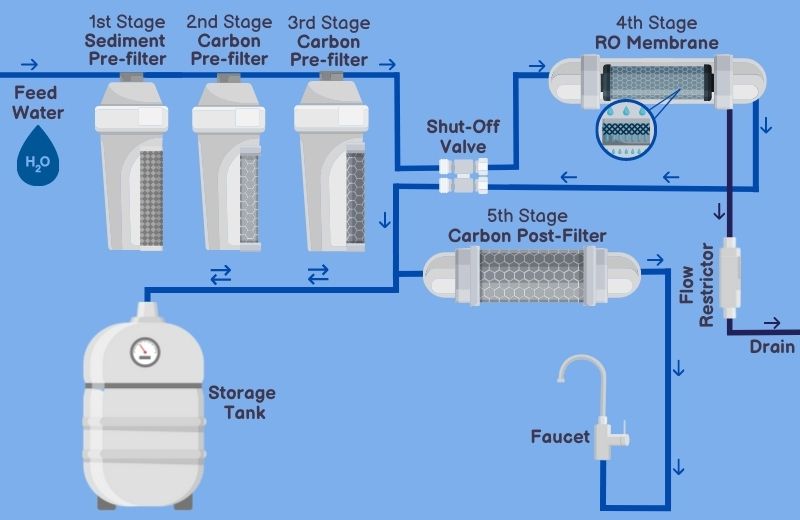
Sediment Pre-Filter
The sediment cartridge is the first filter stage in all RO systems.
Sediment filters trap sand, dirt, dust, rust, and other debris in a drinking water supply. This particulate matter could clog the reverse osmosis membrane surface and reduce its lifespan if not removed.
Most sediment filter cartridges have a 5-micron pore size and last for about 6 months.
Carbon Filter
The are usually two carbon filters in a reverse osmosis filter system:
- A second-stage carbon filter, which removes chemicals like chlorine (most city water utilities provide chlorinated water supplies).
- A carbon polishing filter, which is installed after the RO membrane and gives water a final polish.
Carbon filters use a process called adsorption to attract contaminants into the filter media. Carbon block filters and granular activated carbon filters are both used in RO systems. Both filters last 9-12 months.
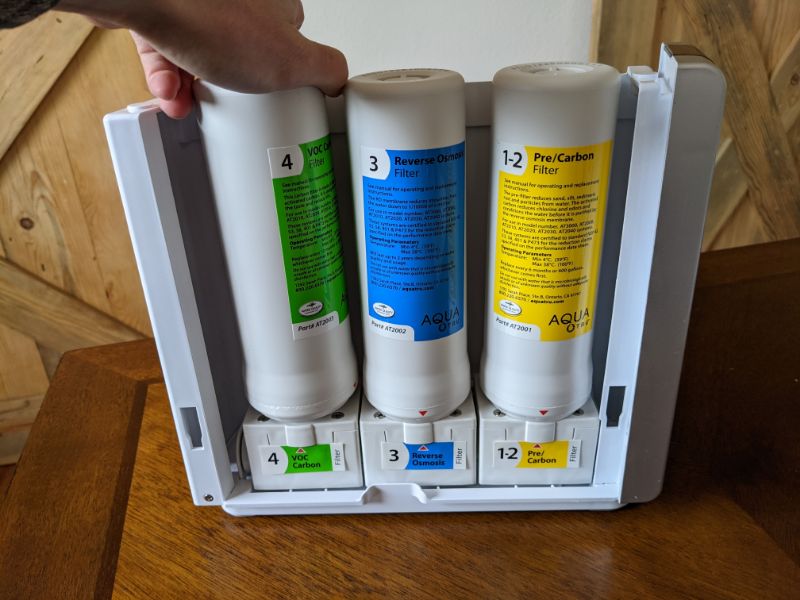
Reverse Osmosis Membrane
The RO membrane, or semipermeable membrane, is a key part of any RO system.
Semipermeable membranes use membrane separation to remove virtually all inorganic and organic substances, including chemicals, metals, microorganisms, minerals, and salts.
RO membranes are usually the third stage in an RO unit and have a 2-year average lifespan.
Other Parts
Water Supply Connector
The water supply adapter or connector connects the under-sink or whole house cold water supply to the RO system. The adapter should make it possible to connect the RO unit to different-sized water supply lines.
Shut-Off Valve
A shut-off valve is used in an RO system that has a water chamber or storage tank.
The role of the shut-off valve is to prevent unnecessary draining when the tank is full.
📌 Once the storage tank has reached two-thirds of the feed pressure, the shut-off valve shuts off the flow of water to the RO membrane. The valve turns water back on once the tank has been emptied to one-third of the feed pressure.
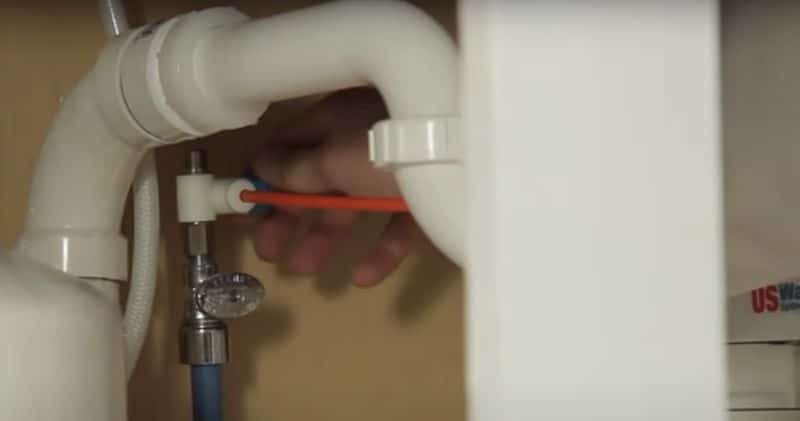
Check Valve
Again, in RO systems with a water tank, the check valve is needed to prevent high-pressure purified water from back-flowing into the RO system, potentially damaging the membrane.
The check valve is usually installed directly after (downstream of) the semipermeable membrane.
Drinking Water Faucet
Most under-sink RO systems come with their own dedicated faucet.
This faucet is lead-free and free from any other metals and substances that could leach back into RO purified water, which is empty of impurities and more susceptible to recontamination.
Most tank-based RO units have an air-gap faucet, which has its own drain connection. This prevents the potential issue of water flowing back through the RO system from the faucet when it’s switched off.
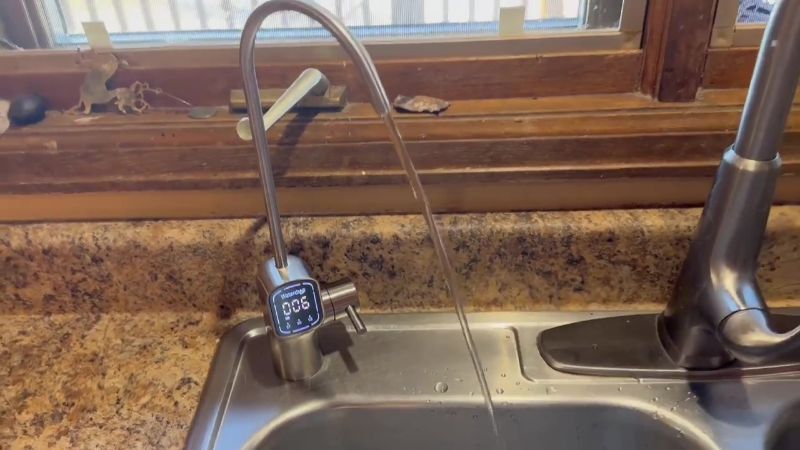
Drain Line
The RO process sends a constant water flow through a tube leading from the RO membrane called the drain line. Traditional RO systems send about 4 gallons of reject water down the drain for every 1 gallon of pure water produced.
💡 Modern RO systems are more efficient and only waste around 1 or 2 gallons of water for every 1 gallon of pure water produced.
Flow Restrictor
A flow restrictor is designed to reduce the flow of water that leaves the drain line by maintaining high pressure in the RO membrane.
Good flow restrictors should be able to control the system’s recovery ratio and minimize water waste.
Optional Components
There are a few components of a reverse osmosis system that are sold as optional add-ons. It’s often worth paying the extra cost for these components.
Water Storage Tank
RO water storage tanks aren’t technically an optional component – if you buy a tank-based RO system, you will need to install the tank.
But we’ve put them in the “optional components” list because there are lots of tank-free reverse osmosis systems available today, which produce purified water on demand, eliminating the need to store water in a tank to deliver to your faucet when you switch it on.
If you DO buy a reverse osmosis filter with a storage tank, here’s what you should know:
- The role of the tank is to store pressurized filtered water, ready for drinking when you open your faucet.
- The tank contains a bladder inside a metal or plastic case that expands as the tank fills, compressing the air in the casing. The pressure in the tank forces water out of the faucet when you switch it on.
- The average tank capacity in an under-sink RO purifier is 2.5-3.5 gallons.
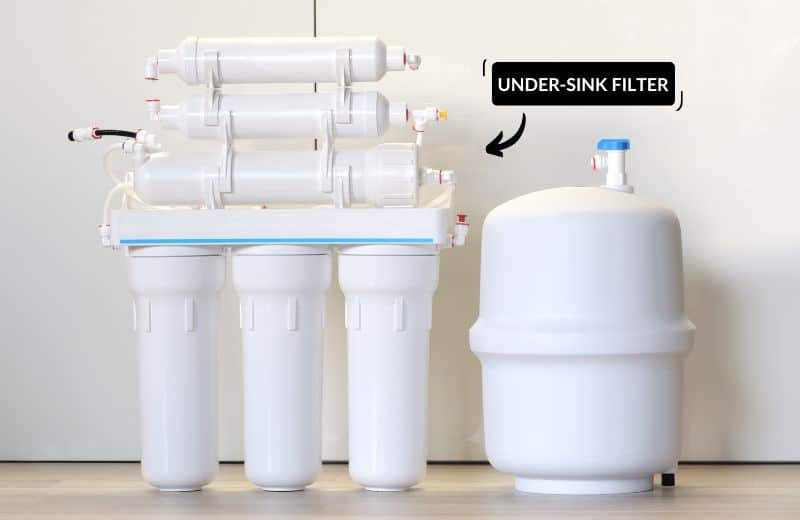
Remineralization Filter
Many RO water filters now come with an optional remineralization filter. Reverse osmosis removes up to 99.99% of all dissolved solids in water, including healthy minerals and salts like calcium, magnesium, zinc, sodium, and potassium.
A remineralization filter, also known as an alkalizing filter or a pH-boosting filter, adds trace amounts of these healthy minerals back into the filtered water, improving its taste and health properties.
Pressure Booster Pump
A pressure booster pump is an optional add-on for homes that don’t have a high enough feed pressure to install a reverse osmosis water filter system.
The ideal water pressure for a reverse osmosis system is 60 PSI, and water pressure below 40 PSI won’t provide enough force to send water through the numerous filter stages. A pressure booster pump increases water pressure to a suitable level for RO performance.
Pressure Regulator
On the other end, high water pressure could damage the pre-filter housings in an RO system, and a pressure regulator is used to protect these housings from water hammer.
UV Disinfection Light
Reverse osmosis removes some bacteria and other pathogens from water, but it doesn’t produce guaranteed microbiological safe water.
If you’re concerned about microorganisms in your drinking water, choose a reverse osmosis system that comes with an added UV disinfection light, which kills microorganisms by scrambling their DNA.
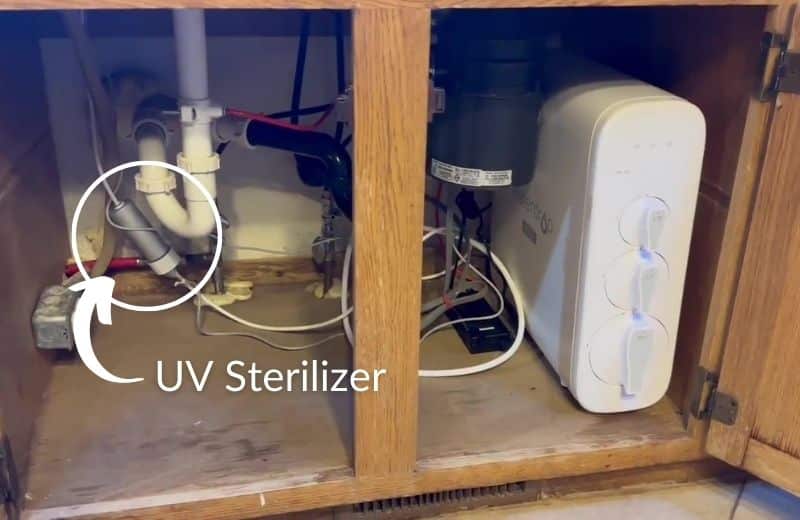
TDS Monitor
A TDS monitor is a feature that’s becoming more and more common in modern under-sink reverse osmosis systems.
TDS monitors are usually installed on a smart faucet and give a reading of the TDS of purified RO water. You can use a TDS monitor to check that an RO system is working and work out when you need to replace the filters.
Continue reading:
📝 Final Word
There are a few other parts of an RO unit that we didn’t mention in this guide, including various tubings, fittings, o-rings, brackets, screws, clips, filter housings, and pressure gauges.
Most manufacturers list the included parts of an RO filter in their advertising copy and user manual. If you can’t find the information you need, contact the manufacturer.
